DaPonte String Quartet: Pathways to Healing - watch the interview, read my review
Buy the CD
Visit DaPonte String Quartet
Download a PDF of the review
Listen to the last movement of Beethoven’s String Quartet in A Minor, Op. 132
Founded in 1991 in Philadelphia, the DaPonte String Quartet left that cosmopolitan city for the peace, beauty and enchantment of rural Maine in 1996 after an earlier residency there resonated in the ensemble’s collective consciousness. Altruistic as the music they play, artistic life in the Pine Tree State, including over 70 concerts a year, residencies, workshops and masterclasses continues to inspire the mission of the group; to connect audiences to the great masterpieces of the string quartet repertoire by bringing to life the human context of each score’s inspiration and creation.
Communities like Boothbay Harbor, South Bristol, Tenant’s Harbor, Harpswell and Portland to name but a handful have embraced the high standard of musical creativity, intellectual process and interpretive integrity DaPonte concerts bring to performances in grange halls, churches, community centers and historic concert halls throughout the state.
Violinists Lydia Forbes and Ferdinand Liva, violist Kirsten Monke and cellist Myles Jordan have in turn found satisfaction in bringing insight and inspiration to a generation or two of Mainers who might otherwise never have had the opportunity to hear a professional string quartet in live performance.
The DaPonte String Quartet’s beautifully engineered and fastidiously executed 2016 CD Pathways to Healing pairs energized and stylistically homogeneous performances of two huge works; Beethoven’s String Quartet in A Minor, Op. 132 and Mendelssohn’s String Quartet in A Minor, Op. 13. The album’s three-word title expresses DaPonte’s aesthetic and also hints at important subtexts to be heard in each.
Both composers were in personal and artistic tumult when they composed these epic narratives - one hears the sturm und drang of their circumstances clearly in the music - yet both also found solace and healing through their art. The most beautiful and reassuring melodies in the string quartet repertoire can be heard here.
Beethoven had little more than a year to live at the premiere of his Opus 132 in November 1825. Mendelssohn was 18 in 1827 when he composed his Opus 13 in honor of Beethoven’s passing that year. Twenty years later (1847) Mendelssohn himself would pass unexpectedly at the too young age of 38.
For Beethoven, the years during which he composed his last four string quartets were agonizing, his health was deteriorating precipitously, deafness exacerbating the composer’s isolation and depression. In 1827 the young wunderkind Mendelssohn had to confront his own demons when his first and only opera, the singspiel Die Hochzeit des Camacho failed, utterly. The composer was 18.
As if on holy pilgrimage Mendelssohn, who adored Beethoven as did every other composer and musician of the period, not only placed his Quartet No. 2 in the same A Minor tonality as Beethoven’s Opus 132, but made use of a compositional technique the master frequently employed in his last works - cyclic form, in which the same thematic material occurs in more than one movement. The younger genius even explored admirably, the harmonic eccentricities and constantly shifting mood changes of Beethoven’s last quartet.
Pathways to Healing is an incomparable window of historic, musicological and performance practice insight, not only for music lovers and audiophiles in general but musicians, amateur and professional alike, working on either or both masterpieces.
The superb acoustics of the historic Head Tide Church (1838) in Alna, Maine (population 725) have provided producer Bob Ludwig an ideal recording venue. Clean sound capture and warm balances are part and parcel of the historic building’s ambiance and contribute immeasurably to the warmth and intimacy of this recording.
A sustained, non-vibrato introduction launches the first movement Assai sostenuto; Allegro [track 1] of the Beethoven quartet, which is the first work on the disc. Rich ensemble blend confirms the musical marriage between these four DaPonte teammates has triumphed over individual temperament. Color and warmth abet the ensemble tone in precious dollops, as the first substantive melodic statement takes hold dramatically – the quartet’s color becoming rich and effusive for the remainder of the movement.
The second movement Allegro ma non tanto [track 2] features tasteful use of rubati – cadential approaches are lusciously crafted, Beethovenian eccentricities in harmonic movement are outlined lovingly by the quartet. The middle section of the movement is particularly magical, like a glass harmonica in it’s delicacy. Balances are beautifully shaped as the tune is passed around the four voices of the quartet, and an elasticity of the bar line contributes to the stylish effect.
Two half step intervals become the heart and soul of the third movement, Molto adagio; Neue Kraft fühlend: Andante [track 3]. Composed in gratitude after the composer survived a particularly awful bout of intestinal disorder that nearly killed him, the subtitle is Heiliger Dankgesang eines Genesenen an die Gottheit, in der lydischen Tonart (Holy song of thanksgiving of a convalescent to the Deity).
A quiet figure, non-vibrato as in the opening bars of the quartet, establishes an appropriately reflective mood. DaPonte’s careful dynamic terracing strengthens the opening statement; a simple swell, then back to the reflective tune that is the movement’s chorale of thanksgiving. Broadly engaging on several emotional levels and beautifully realized by the ensemble – wistful, fleeting, sweetly vulnerable and deeply moving – the movement is taxing on several levels, but the four artists maintain a powerful energy and stamina throughout. An odd ending harmonically – the tonality anything but one of resolution – leaves the listener hanging. Genius.
A brief Alla marcia, assai vivace [Track 4] packs a wealth of dynamic contrast into a short period of time unlike any other quartet writing of the period, followed by a unique fifth movement Allegro appassionato [track 5] that after a folkish introduction, canvases the human condition in all its explosive and contrary energy. The DaPonte performance is so huge it sounds like a string orchestra on occasion. An ensemble of like minds, the quartet also knows when to lay on the vibrato and when not, which makes for a vibrant, colorful, interesting and memorable performance.
The Mendelssohn quartet, which occupies the last half hour of the Pathways CD is a tour de force. The first movement Adagio; Allegro vivace [track 6] after a reflective, almost chorale tune introduction, jumps off the page. So many notes! Extraordinary ensemble energy, a hallmark of the disc, is here resplendent, full-bodied and taught. By contrast, spaciousness is the key to the Adagio non lento [track 7] the quartet working dynamics for maximum expressivity.
The third movement Intermezzo: Allegretto con moto; Allegro di molto [track 8] charms with it’s delightful violin tune over pizzicato accompaniment, a colorful Midsummer Night’s Dream precursor. Mendelssohn composed a concert overture on the Shakespeare subject the year before (1826) which morphed eventually, into the treasured incidental music of 1842.
The last movement Presto: Adagio non lento [track 9] is solidly realized, the quartet taking its time setting moods and declinations, willful outrages and feints - so much beautiful regret and suffering, executed brilliantly with flurries of technical bravura. The last bars of the Adagio non lento section, passive and fate-conscious, represent Mendelssohn’s amen and farewell to the master. The DaPonte Pathways to Healing CD is a gourmet pairing of superbly interconnected works performed with care and perfection.
Daniel Kepl | Performing Arts Review
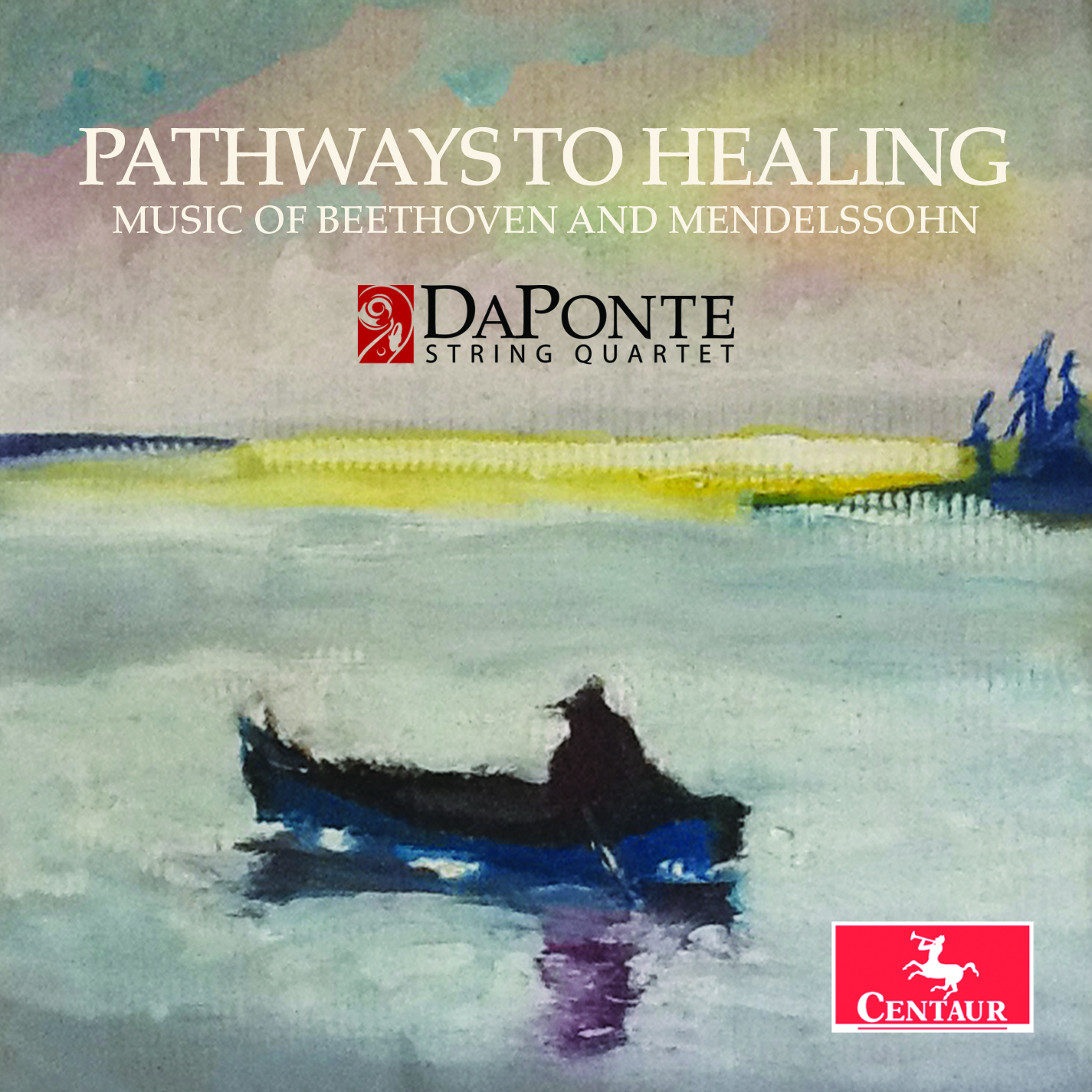
Painting by DaPonte String Quartet cellist Myles Jordan

Daniel Kepl interviews violinist Ferdinand Liva of the Daponte String Quartet

Meet the DaPonte String Quartet in Three Movements
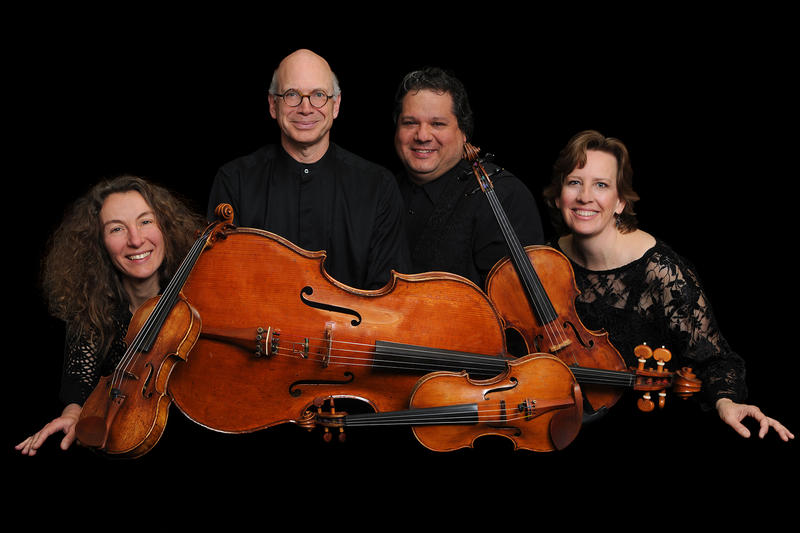

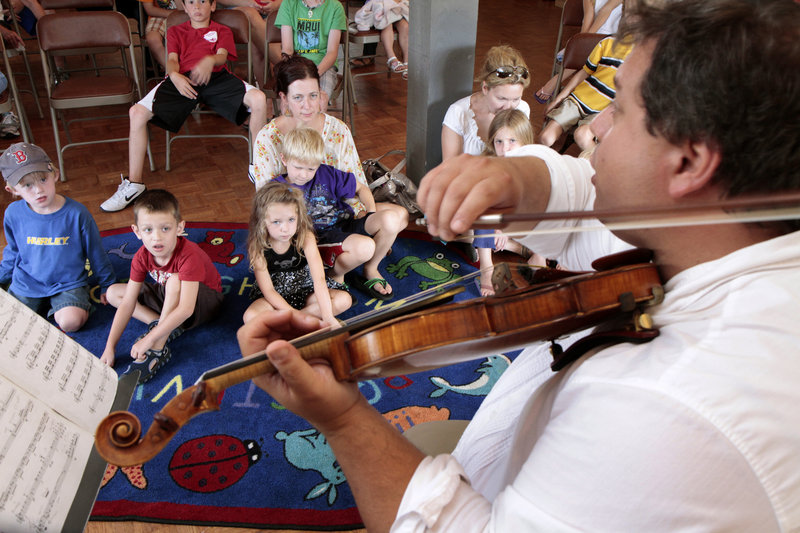
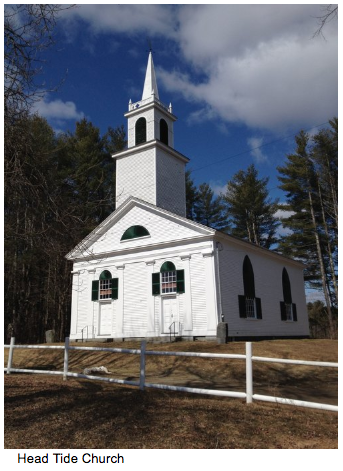
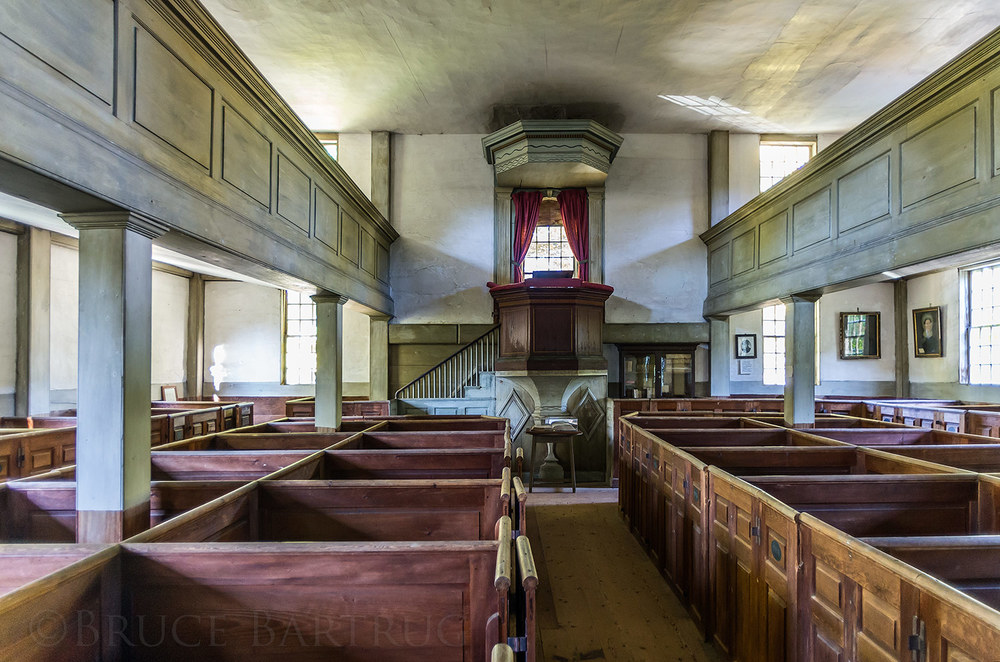
interior of Head Tide Church, Alna, Maine

a recording session with producer Bob Ludwig